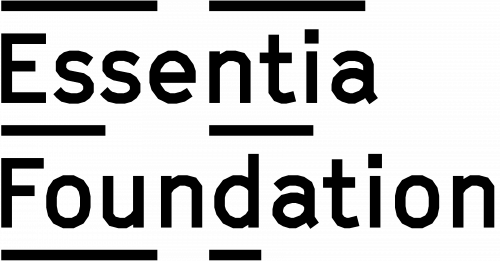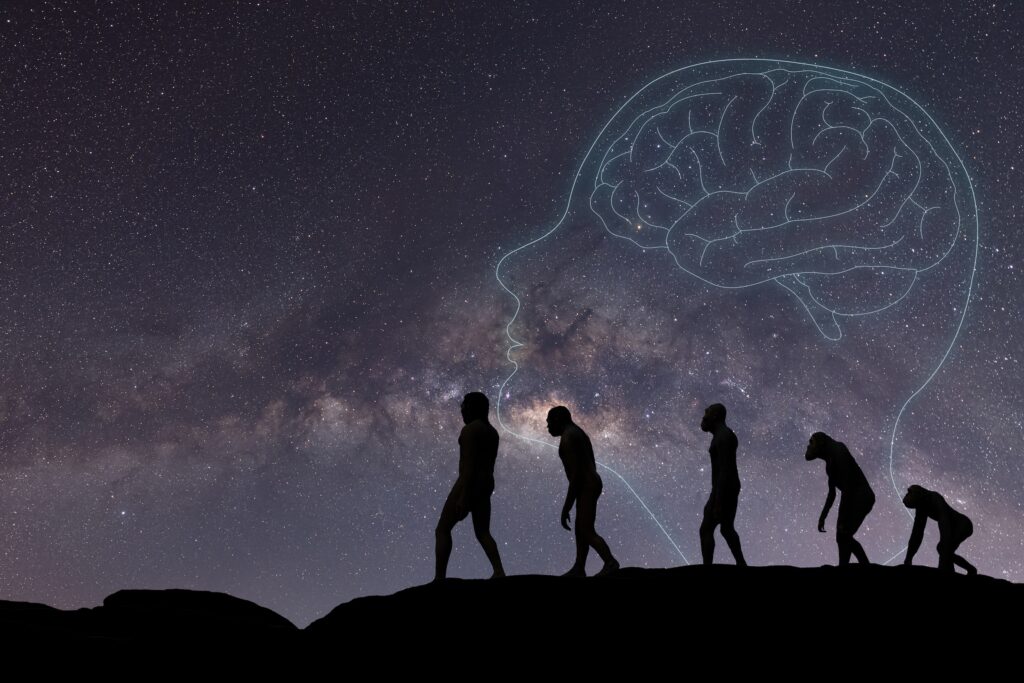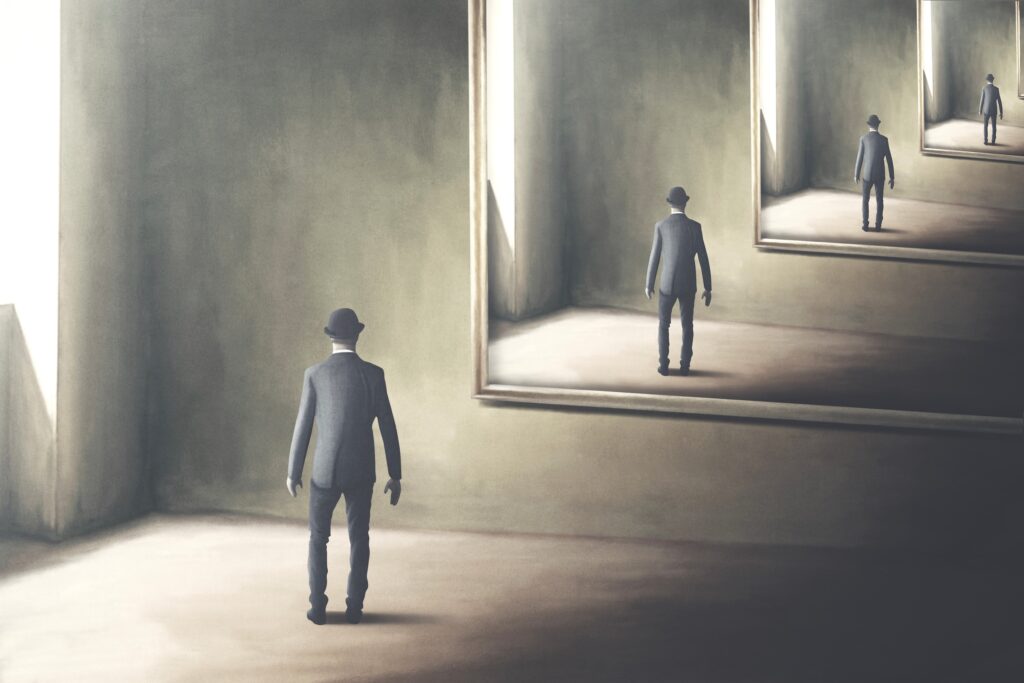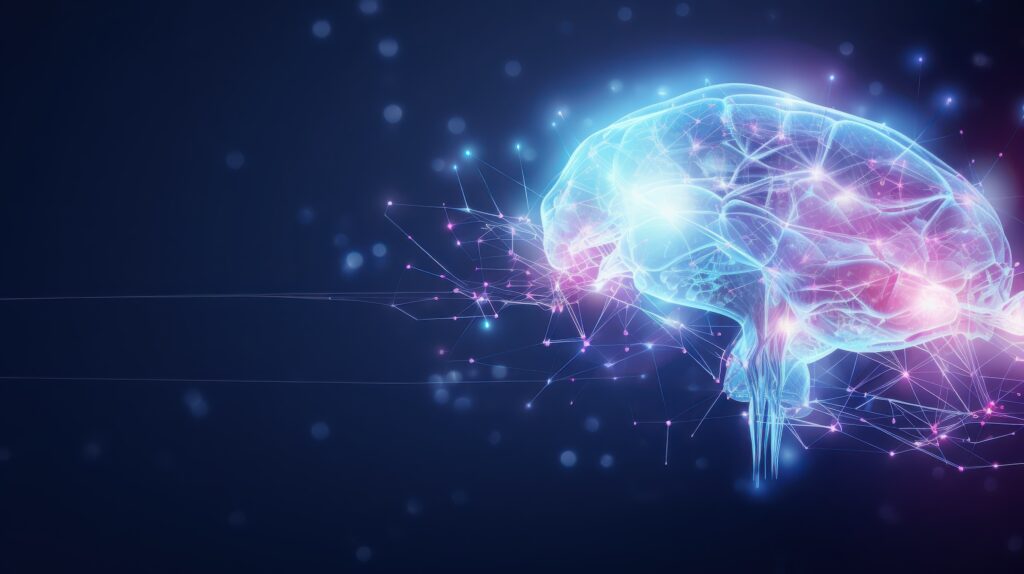Materialism in academia is a fundamentalist belief system
Reading | Metaphysics
![]() Laleh K. Quinn, PhD | 2023-09-10
Laleh K. Quinn, PhD | 2023-09-10

The metaphysics of materialism is a belief system held in large swathes of academia in the same manner, and often for the same reasons, that religious beliefs are held in fundamentalist organizations, argues Dr. Quinn, with 30 years of academic experience to substantiate her views.
“We do not see things as they are, we see them as we are.” Anais Nin (1961)
In October of 2019 I ‘lost’ a dearest friend and colleague to suicide. Just after his passing, I started experiencing what were very unusual phenomena for me. Vivid dreams full of information I didn’t know before, messages, significant signs and feelings, none of which I could explain but somehow knew were given to me from my friend. These experiences were new and unbelievably exciting for me. As a neuroscientist, cognitive scientist, and analytic philosopher, I had been living a life dedicated to experiment and discovery within the confines of academia, which left little room for these types of experience. It’s not just that academia fails (mostly) to inquire at all into these phenomena; rather, there is a deep and very insidious indoctrination by the established members of high-level academic and scientific communities to keep one’s queries narrow enough so as not to elicit any possibility of ‘irrationality’ on the part of the investigator or thinker.
Objectivity and rationality in academia, I was taught, require a belief in what is known as ‘Materialism.’ Materialism is the worldview that the only thing that exists is matter. Everything is matter. Not just tea cups and horses, but feelings of love and joy, thoughts and emotions, the taste of an apple, the beauty of a sunset. They are all matter. If there is something that can’t be explained through this physicalistic paradigm, it is thrown out. As it turns out, I was deeply indoctrinated and engrossed in that worldview myself. So my inherent curiosity concerning the metaphysical, which literally means ‘beyond the physical,’ had been effectively submerged for decades, waiting for something powerful enough to allow that curiosity to overcome the programming I had been subjected to. My colleague’s death was that catalyst.
I’m not exaggerating when I say that there is a cult-like devotion to Materialism in academia. I was exposed to this requirement through those who personally mentored me. As a graduate student at the University of Arizona, specializing in philosophy of science, philosophy of mind, cognitive science, and neuroscience, I was shocked by the antagonism and dismissal of any subject that was possibly mysterious or as yet unexplainable through the methods of current science and logic. To be a part of the in-group one had to dismiss any desire to explore the unknown. If you had metaphysical tendencies, or believed in God, you were ridiculed behind your back, your intelligence questioned.
Luckily, for my continued academic success, I suppressed any beliefs I may have had, or ‘Bliks,’ as one of the most highly regarded professors in the philosophy department would call a belief in God and other ‘irrational’ beliefs. A Blik, according to the urban dictionary, is “a person’s absolute belief in something that would not be changed even with evidence to the contrary.” This kind of ad hominem attack goes to the heart of the issue. In the mind of people like my professor, those who believe in things not allowed by the academic authority are so irrational that no matter how many pieces of evidence mounted against that belief, the believer would hold on tooth and nail, thus revealing their complete lack of objectivity. Those people were not to be trusted and hopefully would never be your colleagues.
I went along with it for many years. I was young and impressionable and feared their judgment. I complied inwardly, questioning my own beliefs, and outwardly, never admitting to them, so as not to be considered lacking in intelligence or ‘not PhD. material.’ This is not to say that I was gullible either. I have always had a very hefty dose of skepticism innately, but I know the difference between skepticism and fundamentalism, and as I came to understand slowly, those whom I was under tutelage were fundamentalists in the deepest and most confining sense of the term. It took me a long time to understand that it was they who were actually succumbing to Bliks, not those they scoffed at. It took a lot of deprogramming, as is the case for anyone involved in a cult, for me to come up for air. I also knew I wasn’t alone in the extent of indoctrination I had been exposed to. This is a widespread tactic in academia. There is an unspoken understanding amongst many of them that to be intelligent and rational is to be a Materialist. I know. I was one of them. By definition that left out belief in all the phenomena that I had an inkling existed.
The irony is that most of the evidence provided by those same academics in the courses they taught would indicate a non-materialist worldview is the more rational approach to understanding reality. Time after time I would encounter the vast mysteriousness of reality and the accompanying vast ignorance of what reality truly is, but this was never acknowledged.
For example, in my first seminar in graduate school we studied Immanuel Kant’s Critique of Pure Reason. Kant was one of the most influential and admired philosophers in the field of metaphysics. I was astounded by what he was saying. The world is not as we perceive it to be. The world cannot be known outside of our perceptual apparati, which come inborn to categorize things in certain ways. We impose space and time and concept and object onto the world. There is a screen, or filter, between us and actual reality, whatever that may be. The philosophers seemed to accept this to be true.
Later I learned that neuroscience reveals the same thing. What the brain detects and what is perceived is not the world as it is but the world as our brains interpret it. Images on the retina are upside down, for example, but the brain ‘interprets’ the data as right side up. ‘Interpretation’ is happening continually. It’s what the brain does. Colors don’t exist in nature, only electromagnetic waves that are translated by the brain into something that we perceive as color. There is a screen between us and the world ‘out there.’ Neuroscientists know this. To me, this seemed to soundly indicate that the ‘matter’ we ascribe as constituting the world is just a figment of our imaginative brains, or at the very least indicates we should be very hesitant in drawing conclusions about that world. For Kant, that world was absolutely unknowable in itself. Kant called that unknown reality the ‘noumena.’
Noumena. That sounded so mystical to my ears. It reminded me of when I realized at a young age that the world is made up of things called atoms, things we couldn’t see and that were composed of mostly empty space. I was about seven and I have a flashbulb memory of where I was when I learned that unexpected fact about the world. I walked around my elementary school and later at home that day as if I were walking in a dreamscape. I still don’t know exactly why that fact made such an impression on my young self, but I believe it’s because it pointed to something bigger, something we don’t fully understand, that maybe we couldn’t know everything, that maybe there’s a deep mystery underlying everything. Something unseen. The Noumena… Was Kant talking about that?
No one would answer that question.
I jumped in to discover more in two incredibly fascinating seminars, one on the philosophy of space and time, and one on the philosophical implications of quantum physics. Quantum physics is notoriously strange. The standard logic and common sense just don’t apply when we’re at the level of subatomic particles. Even the notion of ‘particle’ is fuzzy and most likely just a label for something very incomprehensible. Just a few of the reality-expanding characteristics of the subatomic world that I learned in that seminar included: quantum jumps from one state to next without passing through intermediate states, spontaneous emergence of matter from nothing, backward motion in time by particles known as tachyons [Editor’s note: tachyons are speculative theoretical particles that aren’t part of standard quantum theory or quantum field theory], and quantum entanglement, where two subatomic particles are linked in behavior no matter the distance that separates them. All these phenomena violated our very notion of how the world is supposed to work. And these claims were coming from the top physicists in the world and have been experimentally proven in many cases. What implications does all this have for our very notion of ‘space’ and ‘matter’?
And then there was time. Since Einstein’s theory of Relativity papers from the early 1900’s, we know that time is relative and dependent upon speed. Traveling very fast results in time dilation. There’s a famous Einsteinian thought experiment known as the Twin Paradox, where one twin is on Earth and the other travels close to the speed of light. According to Einstein’s theory, the two twins should age at different rates. The twin traveling more quickly, upon returning to earth, would find that he is much younger than his brother. This is no longer just a thought experiment. It has been objectively proven by the discovery of minute differences in time we have been able to measure with atomic clocks. What time it ‘is’ in an airplane, or even on the top of a mountain, is different from what time it ‘is’ at sea level. At one point Einstein even said “People like us who believe in physics know that the distinction between past, present, and future is only a stubbornly persistent illusion.” It struck me as profoundly myopic that the mysteriousness of space and time and matter did not seem to engender a sense of awe and wonder, or provide an impetus to expand upon the constraints of materialism, in my academic mentors.
When I began to study philosophy of mind, the Materialist stronghold became even more evident. On the Materialist worldview, no one can continue on after the death of the body. However, when you delve deeply, like I did, into why Materialists believe this so strongly, it’s usually because they believe that who we are, our consciousness, is a byproduct of brain activity. Consciousness is one of the most intractable remaining mysteries in philosophy and neuroscience. They call it the ‘hard problem’ of consciousness. It is indeed a profound problem if you are a Materialist who believes that consciousness and all its attendant contents are a product of brain activity. This, to them, is why my friend can no longer exist . If consciousness is dependent upon brain activity, then when we die and our brains stop functioning, consciousness is gone.
My dissertation was on the problem of consciousness, so I know this topic in great detail. I know that Materialists have no scientific explanation of how consciousness could be a product of brain activity, but that doesn’t stop them from believing it anyway. They might point to the fact that when you damage the brain there is often a subsequent effect on conscious experience. Of course there is a correlative link between the brain and consciousness, but this does not mean that brain activity causes consciousness. To believe so violates one of the accepted tenets I was also taught by those very same Materialists: correlation does not imply causation.
As I write this, there is a headline news story about how a famous neuroscientist lost a 25 year old bet that by now there would be a neuroscientific explanation for how brain activity produces consciousness. There isn’t one. This is not at all surprising to me. As a neuroscientist, my technique is to actually probe the brain where I can see and hear neurons ‘firing’ while animals perform learning tasks. I literally can observe the brain as it performs its job. There is not the slightest reason to believe that these cells, that either send an electrical signal to their neighbors, or don’t, can result in the rich inner life of humans and other animals no matter how intricate the connectivity between those cells may be. This is a position held on to by faith. Ask almost any Materialist scientist if the problem of consciousness has been solved, and if they’re honest with you they will say no. They will try and assure you, however, that while we don’t understand how the brain does it now, we will understand it in the future; that it will become clear that somehow when you add enough neurons into a brain, or get them connected in the right way, consciousness must naturally arise. This is wishful thinking, not an explanation, and consciousness remains as elusive as ever under the Materialist paradigm.
Everything I was learning seemed to indicate that we’re living in a universe way more mysterious than we are claiming it to be, and one that the theory of Materialism has a lot of trouble explaining. So, how could we possibly know with certainty that Materialism is true? Couldn’t there be another possibility? Another explanatory paradigm to consider? Isn’t there the possibility of our being in a meaningful universe? If past, present and future are maybe just an illusion, isn’t it possible that psychic phenomena are real? If consciousness is not a product of brain activity, isn’t there the possibility that it can continue after the death of the body and brain? Couldn’t there be the possibility of an afterlife? Where are the philosophical and scientific inquiries into these phenomena, which, if true, would radically change the way we view ourselves, our lives, our place in the universe? Why are these not only not discussed (except by some very brave scientist researching on the “fringe”), but dismissed out of hand as not rational to discuss? How can we be so sure? Their answer: those phenomena violate the assumptions of Materialism, and so are impossible.
If there ever was a case of circular reasoning, this would be it.
It fully dawned on me that I was in a new orthodoxy with all the requirements of membership that you would find in an intolerant faith. Of course, it’s still possible that Materialism is true and it’s still possible that paranormal phenomena like the type I’ve experienced cannot occur, but they are definitely not absolute truths. All the experiences I’ve had, all the research I’ve done, and all the inadequacies of Materialism, point very strongly to a new way of understanding reality. What my brilliant dead colleague has taught me is that it’s okay to finally fully free myself from the narrow confines of Materialism, to no longer be intellectually bullied by the academic elite, and to trust in the mystery that points to a much more profound and wondrous existence than my Materialist colleagues are able or willing to see. For me, this freedom has brought deep meaning and joy and hope back into my life, a state I know is available for everyone.
All we need to do is allow ourselves to spread our wings and delve deeper into the mystery with open minds. We are much, much more than Materialists would have us believe. Let’s allow ourselves to discover that fact.
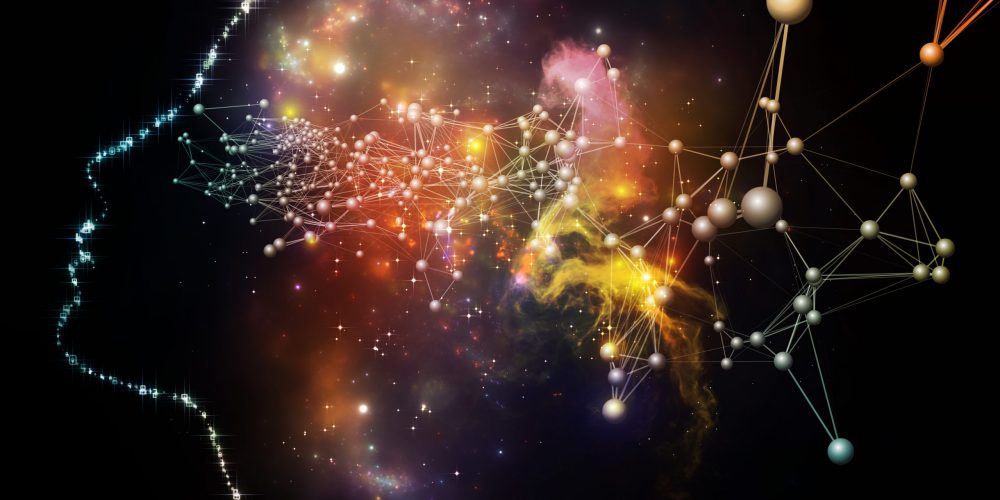
Essentia Foundation communicates, in an accessible but rigorous manner, the latest results in science and philosophy that point to the mental nature of reality. We are committed to strict, academic-level curation of the material we publish.
Recently published
Reading
Essays
Seeing
Videos
Let us build the future of our culture together
Essentia Foundation is a registered non-profit committed to making its content as accessible as possible. Therefore, we depend on contributions from people like you to continue to do our work. There are many ways to contribute.

